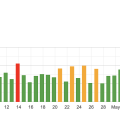When you think about taking your business to the next level in Bulawayo, SEO is the game-changer that you need on your side. “Bulawayo SEO” delves into the strategies and benefits of optimizing your online presence in this vibrant Zimbabwean city.
Whether you’re new to search engine optimization or looking to refine your current approach, this guide offers insights tailored to the unique landscape of Bulawayo, ensuring that your business stands out and thrives in the digital world.
Bulawayo SEO Agency
Have you ever wondered how businesses in Bulawayo are able to climb to the top of search engine results? If you’re trying to get your website to rank higher in Google or Bing, or if you’re just curious about what it takes to make it happen, you’re in the right place.
In this guide, we’ll dive deep into the world of SEO—specifically tailored for Bulawayo. By the time you’re done reading, you’ll have a rock-solid understanding of what Bulawayo SEO Services entails and how you can leverage it to boost your online visibility.

What Is Bulawayo SEO?
Before we get into the nitty-gritty details, let’s start with the basics. SEO stands for Search Engine Optimization. This is the practice of improving your website so that it ranks higher on search engines like Google. But what makes Bulawayo SEO unique is its local focus—optimizing your site specifically for people searching for your services or products in Bulawayo.
Why Should You Care About SEO?
If you run a business in Bulawayo, appearing on the first page of search results can make a huge difference. Higher rankings mean more traffic, and that often translates into more business. Imagine someone is searching for a “coffee shop in Bulawayo.” If your coffee shop appears at the top of the results, chances are high they’ll choose your business over someone else’s. That’s the power of effective SEO.
Keywords: The Backbone of SEO
At its core, SEO revolves around keywords. Keywords are what people type into search engines. If you want your website to appear when someone searches for something related to your business, you need to know what keywords they’re using and optimize your content accordingly.
How to Find the Right Keywords
Finding the right keywords can feel like searching for a needle in a haystack, but it doesn’t have to be complicated. There are plenty of tools available—like Google Keyword Planner, Ahrefs, and SEMrush—that can help you identify keywords related to your business.
Steps to Identify Keywords:
- Brainstorm: Think about what your potential customers might search for.
- Use Tools: Enter these terms into keyword research tools.
- Analyze: Look for keywords with high search volume but low competition.
- Select: Choose a mix of broad and long-tail keywords.
| Step | Description |
|---|---|
| Brainstorm | Think about terms your customers might use to find your services. |
| Use Tools | Enter those terms into tools like Google Keyword Planner or SEMrush. |
| Analyze | Look at the search volume and competition for each keyword. |
| Select | Choose keywords that have a good balance of high search volume and low competition. |
On-Page SEO: Getting Your Website in Shape
Once you have your keywords, the next step is to optimize your website. This is where on-page SEO comes into play. On-page SEO refers to all the actions you take directly on your website to improve its search engine rankings.
Title Tags and Meta Descriptions
Your title tag is one of the first things search engines evaluate when they crawl your site, so make it count. It should be engaging and include your primary keyword.
Meta descriptions, while not a direct ranking factor, can influence click-through rates. A compelling meta description can entice users to click on your link, increasing your traffic.
URL Structure
A clean and simple URL structure is not only user-friendly but also search engine-friendly. Make sure your URLs are straightforward and include your target keywords.
Header Tags (H1, H2, H3)
Header tags break up your content into easily digestible sections, making it easier for visitors and search engines to understand. Use your primary keyword in your H1 tag and secondary keywords in H2 and H3 tags.
Content Quality
Content is king. Always has been, always will be. High-quality, informative, and engaging content can outperform poorly written content every time. Make sure your content is original, well-researched, and relevant.
Internal Linking
Internal linking helps search engines understand the structure of your website and establishes a hierarchy. It also keeps users engaged by guiding them through relevant content on your site.
Off-Page SEO: Building Authority
On-page SEO gets your site in shape, but off-page SEO gives it the authority and relevance it needs to rank higher. Off-page SEO is all about actions taken outside your website that impact its ranking.
Backlinks
When it comes to off-page SEO, backlinks are invaluable. A backlink is when another website links to yours. It’s a vote of confidence and can significantly impact your rankings.
How to Build Quality Backlinks:
- Guest Blogging: Write articles for other websites.
- Social Media: Share your content to get it in front of more people.
- Networking: Build relationships with other businesses in Bulawayo.
- Directories: List your business in local directories.
Social Signals
While social media might not directly impact your search rankings, the traffic and engagement generated from social platforms can. Share your content on platforms like Facebook, Twitter, and LinkedIn to increase your reach.
Reviews and Ratings
Positive reviews and high ratings on sites like Google My Business and Yelp can improve your local SEO. Encourage satisfied customers to leave reviews.

Local SEO: Own Your Neighborhood
If you’re aiming to attract local customers, you can’t ignore local SEO. Local SEO focuses on optimizing your online presence to attract more business from relevant local searches.
Google My Business
One of the most important steps in local SEO is setting up and optimizing your Google My Business (GMB) listing. A well-optimized GMB listing can significantly enhance your local visibility.
Steps to Optimize Google My Business:
- Complete Your Profile: Fill out every section, including hours, services, and photos.
- Update Regularly: Keep your information current.
- Get Reviews: Encourage customers to leave reviews and respond to them.
- Use Posts: Share updates, offers, and events through GMB posts.
Local Directories
Listing your business in reputable local directories can help improve your local SEO. Ensure your NAP (Name, Address, Phone number) is consistent across all listings.
Measuring Your Success
How do you know if your SEO efforts are paying off? You need to measure and analyze your performance.
Key Metrics to Track
Tracking the right metrics can help you see if your SEO strategy is working or if it needs adjustment. Here are some key ones to keep an eye on:
| Metric | What It Tells You |
|---|---|
| Organic Traffic | Number of visitors coming from search engines. |
| Bounce Rate | Percentage of visitors who leave your site after viewing one page. |
| Conversion Rate | Percentage of visitors who take a desired action. |
| Average Session Duration | Time visitors spend on your website. |
| Keyword Rankings | Your position in search engine result pages for targeted keywords. |
| Backlinks | Number and quality of links pointing to your site. |
Tools for Measurement
There are several tools you can use to track your SEO metrics:
- Google Analytics: Offers a comprehensive view of your site’s performance.
- Google Search Console: Provides insights into your search traffic and performance.
- Ahrefs, SEMrush, Moz: Paid tools that offer detailed SEO analytics.

Mobile SEO
With more people using mobile devices to browse the internet, mobile SEO is more important than ever. Google even uses mobile-first indexing, meaning it predominantly uses the mobile version of the content for indexing and ranking.
How to Optimize for Mobile SEO
- Responsive Design: Ensure your site looks good on all devices.
- Fast Loading Times: Optimize images and reduce server response times.
- Simple Navigation: Make it easy for users to navigate on smaller screens.
- Mobile-Friendly Content: Use shorter paragraphs and larger fonts.
Common SEO Mistakes to Avoid
Even with all this knowledge, it’s easy to make mistakes. Here are some common pitfalls to avoid:
Keyword Stuffing
Cramming your content with keywords can make it unreadable and might get you penalized by search engines. Use keywords naturally.
Ignoring Mobile Users
As mentioned earlier, failing to optimize for mobile can hurt your rankings. Make sure your site is mobile-friendly.
Poor-Quality Content
Thin or poorly written content can harm your SEO efforts. Always strive for high-quality, informative content.
Neglecting Local SEO
If you’re a local business, ignoring local SEO can mean missing out on local customers. Optimize your GMB listing and get listed in local directories.
Advanced SEO Strategies
Once you’ve mastered the basics, you might want to dive into advanced SEO tactics to further boost your rankings.
Schema Markup
Schema markup is a form of microdata that helps search engines understand your content better. It can improve the way your page is displayed in SERPs (Search Engine Results Pages) by enhancing rich snippets.
Voice Search Optimization
With the rise of voice-activated devices, optimizing for voice search can offer a competitive edge. Focus on long-tail keywords and natural language queries.
Content Clusters
Content clusters involve creating a pillar page that provides a broad overview of a topic and linking it to cluster pages that cover subtopics in more detail. This structure helps improve your site’s authority on the topic.
Conclusion: Your Path to SEO Success in Bulawayo
SEO can be intimidating, but it doesn’t have to be. By understanding and implementing the fundamentals of both on-page and off-page SEO, you can significantly improve your website’s visibility and attract more local customers in Bulawayo. Remember, SEO isn’t a one-time task but an ongoing process. Constantly monitor your performance, adapt your strategies, and stay up-to-date with the latest SEO trends. Happy optimizing!











